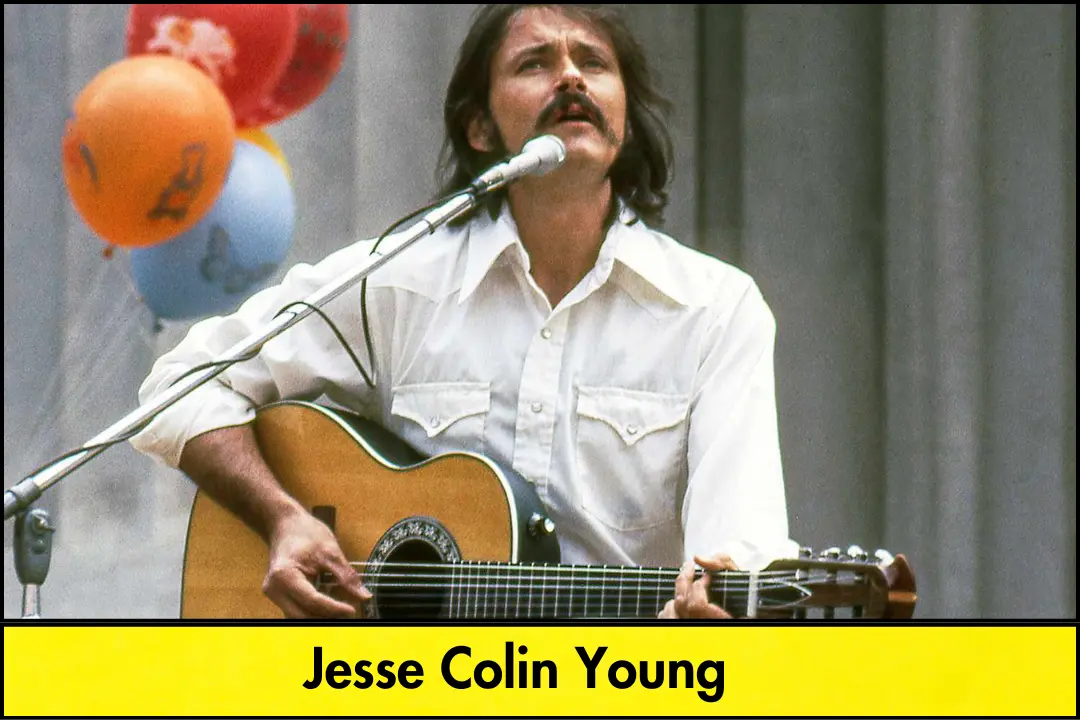https://dailynewswriter.com/sam-rockwell-movies-series-wife-net-worth-dancing-height/
In the tapestry of American music, certain artists stand out not just for their melodies but for the spirit they embody. Jesse Colin Young, the soulful voice behind the Youngbloods, is one such artist. His rendition of “Get Together” became an anthem of the 1960s, encapsulating the era’s yearning for peace and unity. Beyond this iconic track, Young’s solo endeavors, particularly the song “Ridgetop”, offer a deep dive into his artistic evolution and personal reflections.
Early Life and Musical Beginnings
Born Perry Miller in Queens, New York, in 1941, Young was immersed in a musically rich environment. His mother, a violinist with impeccable pitch, and his father, an accountant with a passion for classical compositions, nurtured his early musical inclinations. This foundation paved the way for Young’s exploration of various genres, from classical to folk and blues.
In 1959, Young attended Phillips Academy in Andover, Massachusetts, where he studied classical guitar. However, his rebellious spirit led to his expulsion, prompting a brief stint at Ohio State University. The allure of Greenwich Village’s vibrant music scene soon beckoned, and by 1961, Young was performing regularly, adopting his stage name as a blend of inspirations from outlaws and innovators.
Formation and Success with the Youngbloods
The mid-1960s marked a pivotal turn in Young’s career. Teaming up with Jerry Corbitt, Lowell “Banana” Levinger, and Joe Bauer, he co-founded the Youngbloods. The band’s self-titled debut album in 1967 featured “Get Together”, a track that, though initially modest in its reception, soared to prominence in 1969, reaching No. 5 on the Billboard Hot 100. This song, with its message of unity, became emblematic of the counterculture movement.
Beyond “Get Together”, the Youngbloods produced tracks like “Darkness, Darkness” and “Sunlight”, showcasing a blend of folk, rock, and jazz influences. Their music resonated with audiences seeking authenticity and depth during tumultuous times.
Transition to Solo Career and ‘Ridgetop’
By 1972, the Youngbloods had disbanded, and Young embarked on a solo journey. Relocating to Inverness, California, he constructed a recording studio adjacent to his home, symbolizing a new chapter of creative freedom. This period birthed albums like “Together” (1972) and “Song for Juli” (1973), the latter remaining on the Billboard 200 for nearly a year.
Among his solo works, “Ridgetop” stands out as a heartfelt ode to his Inverness abode. The song paints vivid imagery of serene landscapes, reflecting Young’s deep connection to his environment. Its mellow rhythm and evocative lyrics invite listeners into a world of tranquility and introspection, capturing the essence of his life on the ridgetop.
Net Worth and Financial Ventures
Throughout his extensive career, Young not only garnered acclaim but also financial success. As of recent estimates, his net worth was approximately $2 million. This wealth stemmed from album sales, touring, and his ventures into independent music production. In 1993, alongside his wife Connie, Young established Ridgetop Music, an independent label aimed at re-releasing his 1970s catalog and producing new works. This endeavor not only granted him artistic control but also opened avenues for revenue beyond traditional record deals.
Personal Life and Resilience
Young’s personal narrative is intertwined with themes of resilience and adaptability. His first marriage to Suzi Young brought two children, Juli and Cheyenne. The song “Song for Juli” was a touching tribute co-written with Suzi about their daughter. The birth of his son Cheyenne inspired the track “Morning Sun” from the “Song for Juli” album.
The early 1970s saw Young settling in Inverness, California, where he built a house atop a ridgetop. This residence became both a personal sanctuary and a creative hub, with a recording studio that remarkably survived the devastating Mount Vision Fire in 1995. Post-fire, Young and his family relocated to Hawaii, embracing a life amidst the Kona Coffee Belt.
His second marriage to Connie Darden-Young brought two more children, Tristan and Jazzie. Both inherited their father’s musical inclinations, with Tristan graduating from the Berklee College of Music in 2016 and joining his father’s band. Jazzie pursued an independent music career, releasing her own compositions since 2017.
Health Challenges and Return to Music
In 2012, Young faced a significant health challenge with a diagnosis of chronic Lyme disease, leading him to step back from performing. However, inspired by the musical prowess of his son’s peers at Berklee, he returned to the stage in 2016. This resurgence culminated in the 2019 release of “Dreamers”, an album reflecting contemporary themes and showcasing collaborations with younger musicians, including his son Tristan.
Legacy and Final Years
Young’s contributions to music extended beyond performance. His songs, characterized by soulful melodies and poignant lyrics, have been covered by artists like Robert Plant, whose rendition of “Darkness, Darkness” earned a Grammy nomination in 2002. Young’s commitment to environmental and social causes further cemented his legacy as an artist deeply connected to the world around him.
On March 16, 2025, Jesse Colin Young passed away at his home in Aiken, South Carolina, at the age of 83. His death marked the end of an era, but his music continues to resonate, embodying messages of love, unity, and reflection.
Conclusion
Jesse Colin Young’s career spanned over six decades, leaving a lasting impact on folk-rock music. From his early days with the Youngbloods to his successful solo career, Young consistently delivered music that spoke to the heart. His ability to blend folk, rock, and jazz influences into meaningful and soulful compositions made him a unique voice in the industry. His iconic song “Ridgetop” not only captured his love for nature but also stood as a testament to his storytelling abilities.
Even as he faced personal challenges, including health struggles and the devastating loss of his California home, Young remained dedicated to his craft. His return to music in his later years, alongside his children, demonstrated his unwavering passion. His influence on younger generations, both within his family and the broader musical community, ensures that his legacy will continue to inspire future artists. Jesse Colin Young may be gone, but his voice and message of love, unity, and peace live on through his timeless music.
FAQs
- What is Jesse Colin Young’s net worth?
As of recent estimates, Jesse Colin Young’s net worth was around $2 million, accumulated from album sales, touring, and independent music ventures. - What is the meaning behind “Ridgetop”?
“Ridgetop” is a song reflecting Jesse Colin Young’s deep connection to his home in Inverness, California. It paints a vivid picture of his peaceful life in the hills, emphasizing nature’s beauty and personal serenity. - Did Jesse Colin Young continue performing in his later years?
Yes, despite battling chronic Lyme disease, Young made a comeback in 2016, performing with younger musicians, including his son. He released the album Dreamers in 2019. - What impact did Jesse Colin Young have on folk-rock music?
Young’s work with the Youngbloods and his solo career helped define folk-rock, blending heartfelt lyrics with diverse musical styles. His song “Get Together” became an anthem for peace and unity. - Where did Jesse Colin Young spend his final years?
Young lived in Aiken, South Carolina, where he continued to engage with music and family before passing away on March 16, 2025.






